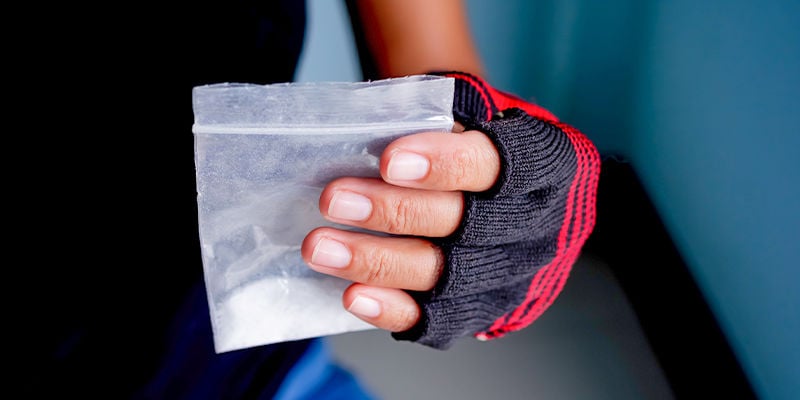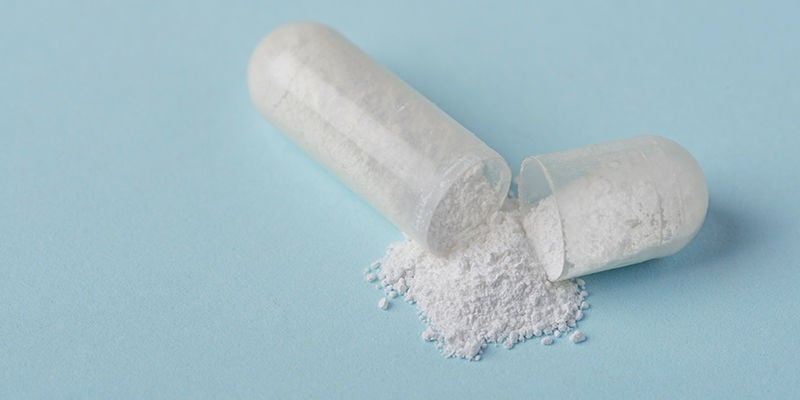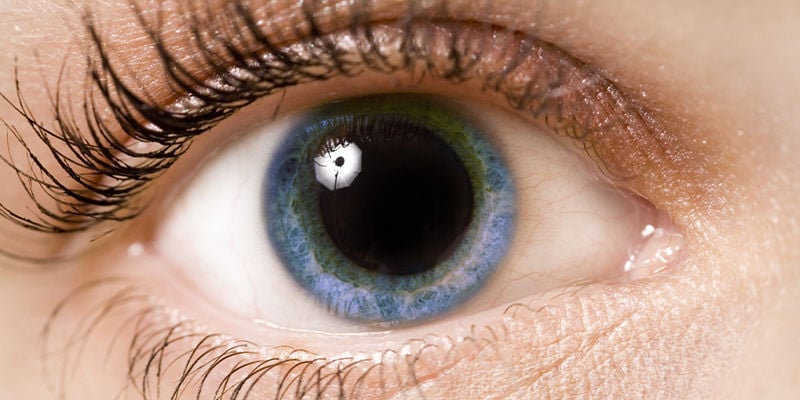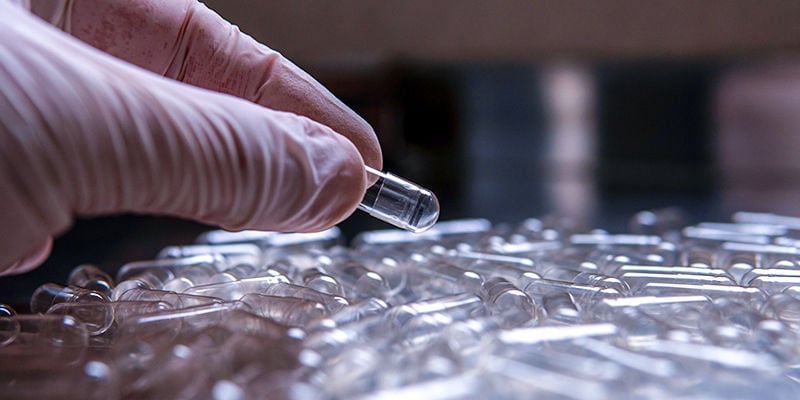
Microdosing Ketamine: What You Need To Know
Typically known for providing some powerful anaesthesia-like and dissociative effects, ketamine has long been viewed in a very negative light when it comes to consumption. Favoured as a party drug by many, ketamine is often associated with excess use. However, many are turning to microdosing to unlock the potential well-being benefits of ketamine. While the research is in its infancy, you certainly don't have to look far to find some anecdotal evidence. Join us as we delve into everything you need to know about microdosing ketamine.
Due to its almost unique, dissociative effects, ketamine has been the subject of many experiments. As with several drugs, ketamine lives multiple lives at once: anaesthetic, party drug and novel-therapeutic drug.
Many of you may be interested in finding out more about ketamine, and many of you may well have tried it already. More than almost any drug, ketamine is moving from being vilified, to venerated. Why, what’s all the fuss about?
Correlating with the rise in popularity of ketamine is the rise of microdosing. So what happens if you microdose ketamine? In this article, we explore this topic. However, before we go any further, it’s worth recognising that research into ketamine, and research into microdosing are both still in their infancy. And research into microdosing ketamine is still very young, so nothing you read below should be taken as proven fact.
What Is Ketamine?

Ketamine has been commonly used as an animal tranquilizer—you may well have heard it described as a horse tranquilizer. In the 1970’s, it also begun to be used to sedate humans. Its uses range from partial anaesthetic for the relief of extreme pain, through to full sedation.
In terms of pharmacology, it is what is known as a dissociative anaesthetic. This means that it induces trance-like states of anaesthesia, where the person experiencing it may have out of body experiences, rather than simply falling unconscious.
Ketamine usually comes in a white powdered or liquid form. The former is often snorted. Liquid ketamine can be injected, or “cooked” in order to produce ketamine powder.
What Are the Effects of Ketamine?
As mentioned, ketamine is classed as a dissociative anaesthetic. At high doses, it renders the user/patient unconscious. However, it is unclear whether people still have some experience even at the highest doses. There is some conjecture that although people may not be able to remember what happens at anaesthetic doses, that they still experience something.
At lower doses, ketamine can be used to relieve pain, especially in cases of extreme trauma. And, more recently, ketamine is being used to treat previously treatment resistant cases of depression, and the results are highly promising.
On a recreational level, people use ketamine for its psychedelic-like effects, and its ability to enhance sensory stimulation, and combine well with some other drugs—on a phenomenological level, it can have dangerous interactions with other drugs on a physical level.
Why Microdose Ketamine

Whilst, in a medical setting, ketamine is rarely given in sub-perceptual doses, some people do choose to microdose ketamine. Microdosing means that a user does not feel high, but they may still, over time, notice subtle effects on their life.
Research and anecdotal evidence suggest that when taken in small doses, Ketamine does hold some therapeutic potential. One study on rats noted that low doses of ketamine helped to improve attention and motivation in “poor performing rats” (Higgins, 2021).
There are similar anecdotal accounts that claim that, when regularly microdosed, ketamine can help to increase focus and creativity.
However, research into this practice is lacking. Another study concluded that there was no evidence to support the idea that there are benefits to microdosing ketamine, and that, in Wistar rats, it could in fact increase feelings of anxiety (Horsely 2018).
How Can You Microdose Ketamine?
Microdosing ketamine is difficult. Moreover, the method of consumption determines the dosage. For instance, insufflated ketamine has a much lower bioavailability compared to injected ketamine, which means that dose needs to be higher.
Experiments that were done on human subjects used daily doses of oral Ketamine hydrochloride (Irwin, 2013). Doses were given at 0.5 mg/kg, over 28 days, which is also deemed to be the standard amount for microdosing. Results show a “significant improvement” in the participants’ depressive symptoms.
Microdosing any drug, however, involves some individual experimentation. Use the above measurements as a guideline. And remember, if you can feel the effects, you are not microdosing.
What to Expect In Terms of Effects

Really, you shouldn’t feel any effects immediately. Over time, people report that they generally feel better or have enhanced creativity, focus, motivation and so on, but you shouldn’t get a noticeable high.
Physically, your pupils might dilate a little and your heart rate and blood pressure could increase. Ultimately though, the point of microdosing is that it is sub-perceptual.
What Are the Risks?
Ketamine is, especially compared to comparative psychedelics that can be used for microdosing, a very dangerous drug. At higher doses, it has strong dissociative effects which can make navigating even the simplest situations impossible.
Moreover, unlike other psychedelics, ketamine can have strong physical effects, which, especially if combined with drugs and alcohol, can be fatal.
It is also a drug with a high potential for addiction and abuse, which makes taking it regularly potentially problematic. At high doses, it is known that ketamine can cause strong addictions. At lower doses, including microdoses, it is unclear how addictive it may be. But you should ask yourself, are you willing to take the risk to find out?
Using ketamine, regularly or occasionally, comes with significant risks.
Should You Microdose Ketamine?

We can’t advise you to try ketamine microdosing, as too little is known about its effects, and its safety. However, that’s not to say you shouldn’t, just that if you do, you should be incredibly careful. Most importantly, educate yourself about ketamine’s addictive nature, and learn to dose properly.
If at all possible, microdose ketamine with the assistance of a trained professional. It may surprise you to learn that, at least privately, ketamine therapy is now legal in many countries, even though it's not advertised. So think twice before doing it alone.
- Higgins GA, Carroll NK, Brown M, MacMillan C, Silenieks LB, Thevarkunnel S, Izhakova J, Magomedova L, DeLannoy I, & Sellers EM. (02/26/2021). Low Doses of Psilocybin and Ketamine Enhance Motivation and Attention in Poor Performing Rats: Evidence for an Antidepressant Property - https://pubmed.ncbi.nlm.nih.gov
- Horsley RR, Páleníček T, Kolin J, & Valeš K. (2018 Sep). Psilocin and ketamine microdosing: effects of subchronic intermittent microdoses in the elevated plus-maze in male Wistar rats - https://pubmed.ncbi.nlm.nih.gov
- Scott A. Irwin, Alana Iglewicz, Richard A. Nelesen, Jessica Y. Lo, Connie H. Carr, Sheilani D. Romero, & Linda S. Lloyd. (2013, August). Daily Oral Ketamine for the Treatment of Depression and Anxiety in Patients Receiving Hospice Care: A 28-Day Open-Label Proof-of-Concept Trial - https://www.ncbi.nlm.nih.gov
-
 3 min
3 April 2023
All You Need To Know About Microdosing LSA
As a naturally occurring psychedelic substance in some plants, LSA has long been favoured for its potent effects that are often likened to those of LSD. However, while trips are one thing, many are...
3 min
3 April 2023
All You Need To Know About Microdosing LSA
As a naturally occurring psychedelic substance in some plants, LSA has long been favoured for its potent effects that are often likened to those of LSD. However, while trips are one thing, many are...
-
 4 min
20 March 2023
Microdosing MDMA: What You Need To Know
The practice of microdosing is becoming increasingly popular, with LSD and psilocybin among the most popular substances in this context. But what about other drugs? In this article, we discuss the...
4 min
20 March 2023
Microdosing MDMA: What You Need To Know
The practice of microdosing is becoming increasingly popular, with LSD and psilocybin among the most popular substances in this context. But what about other drugs? In this article, we discuss the...













 United States
United States










